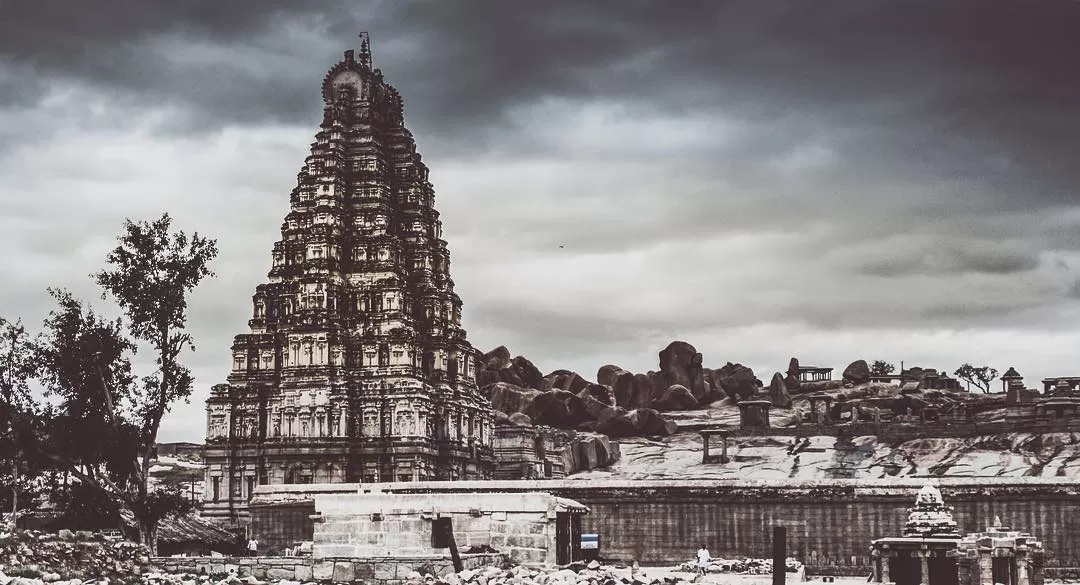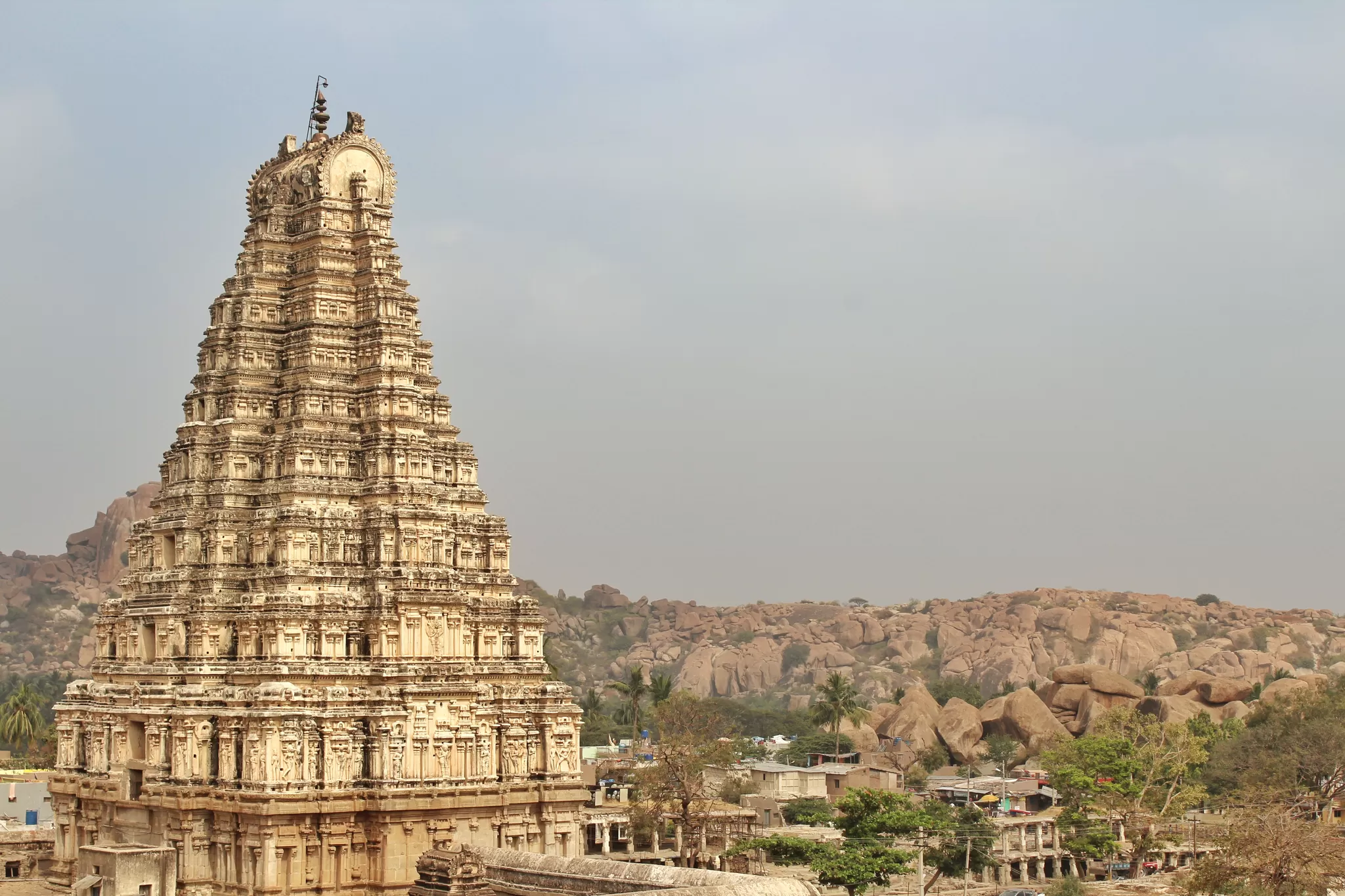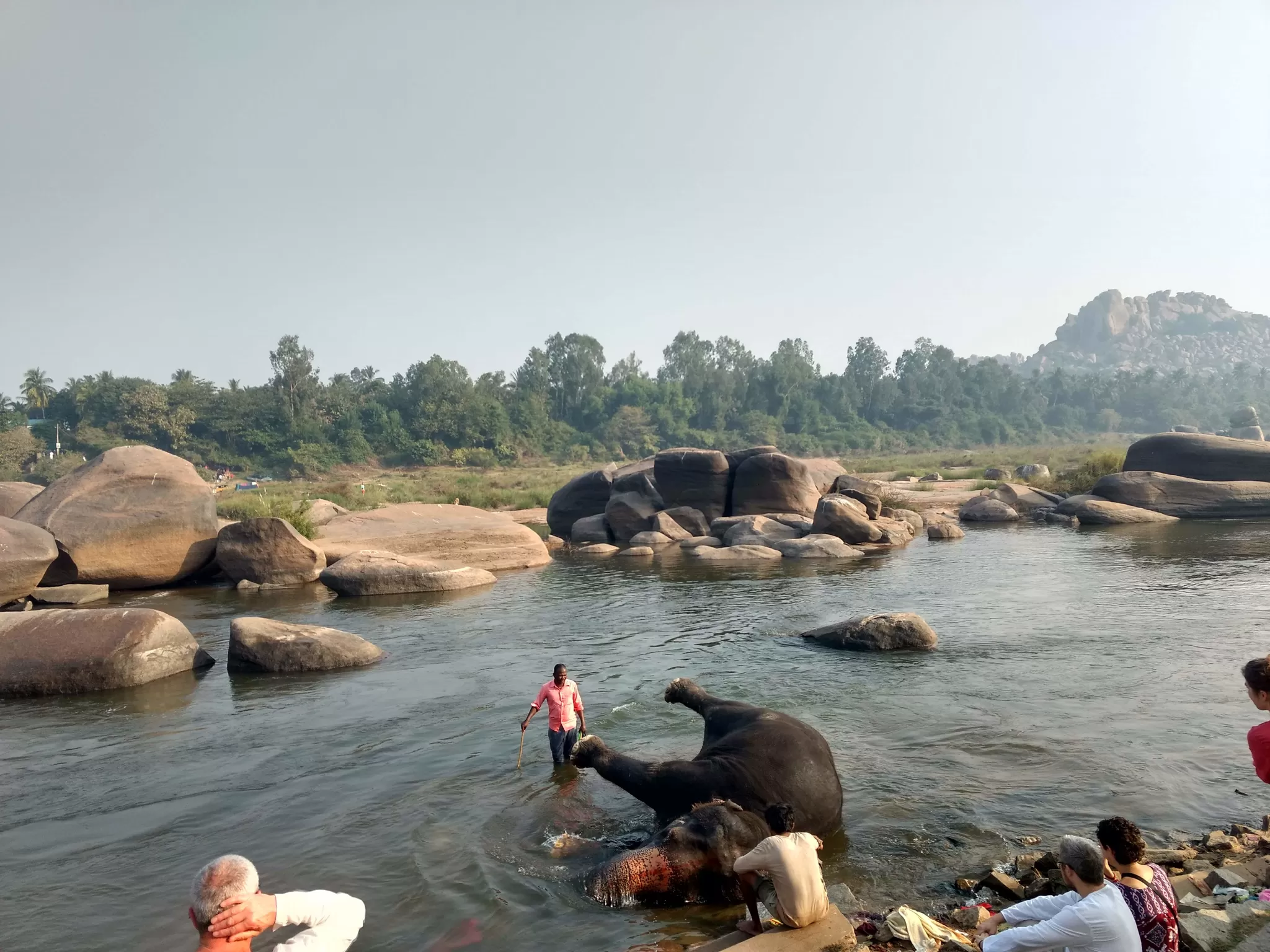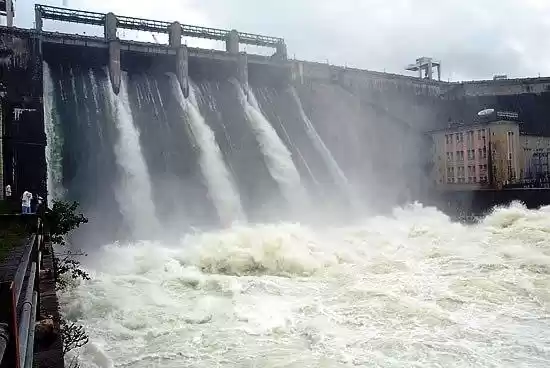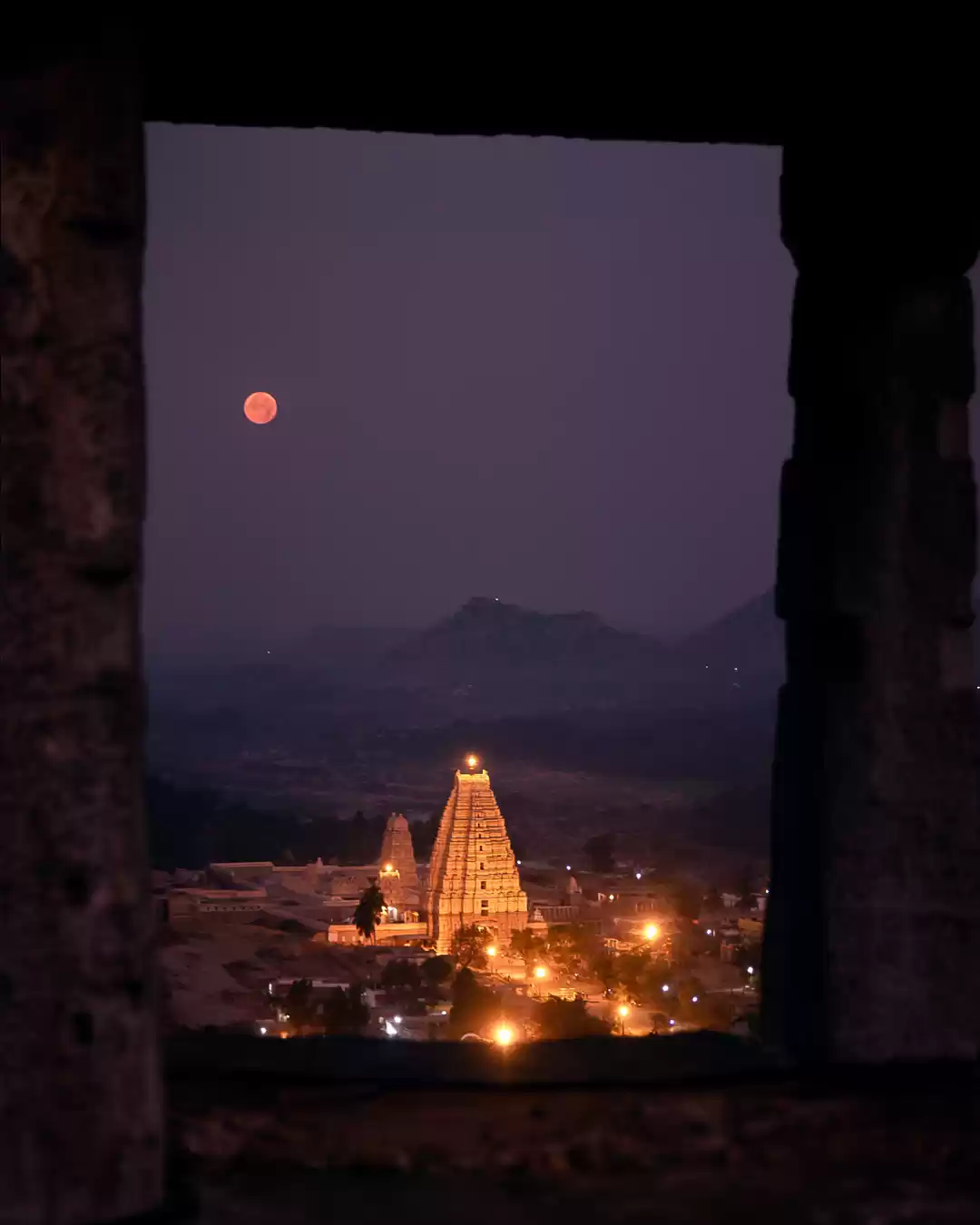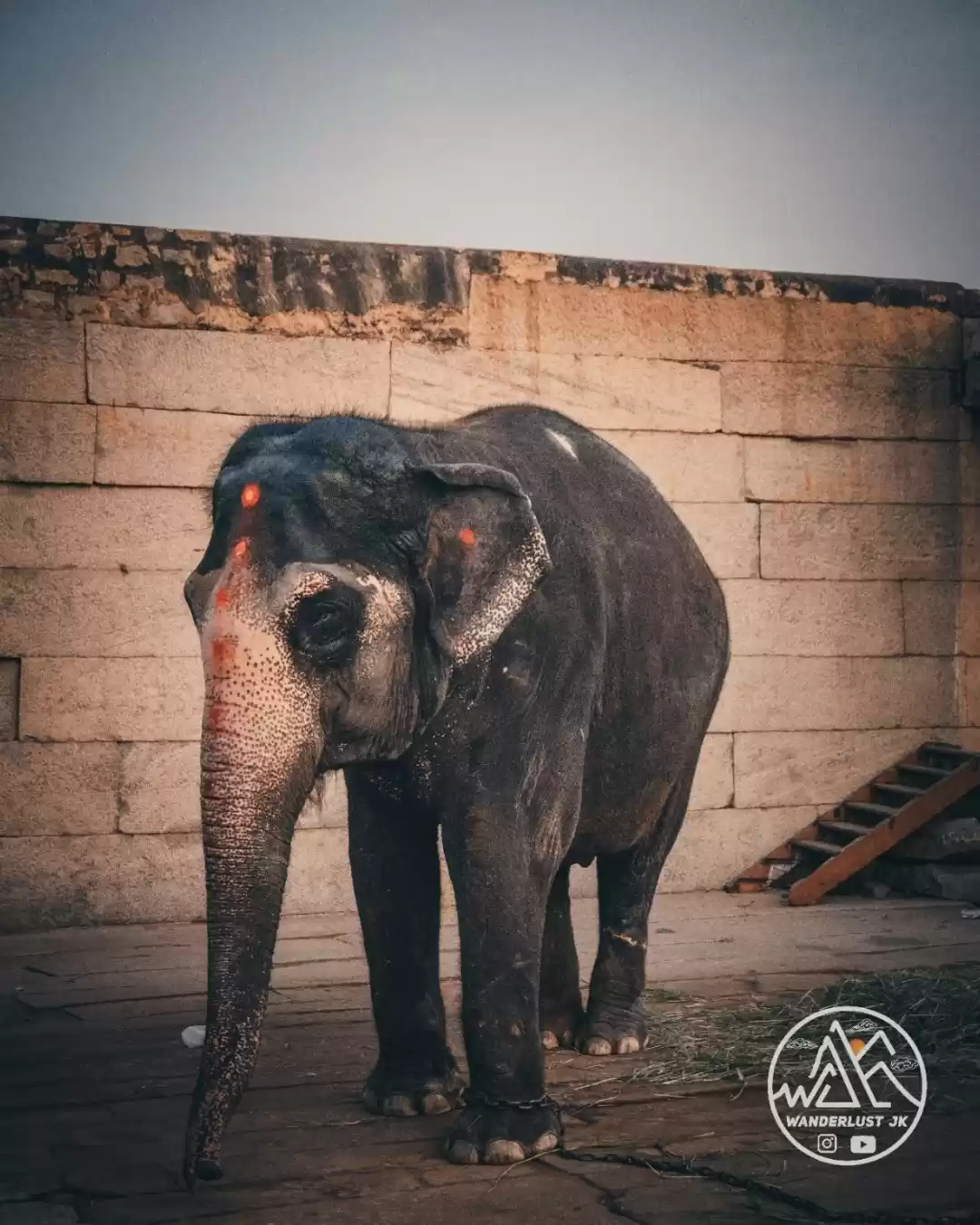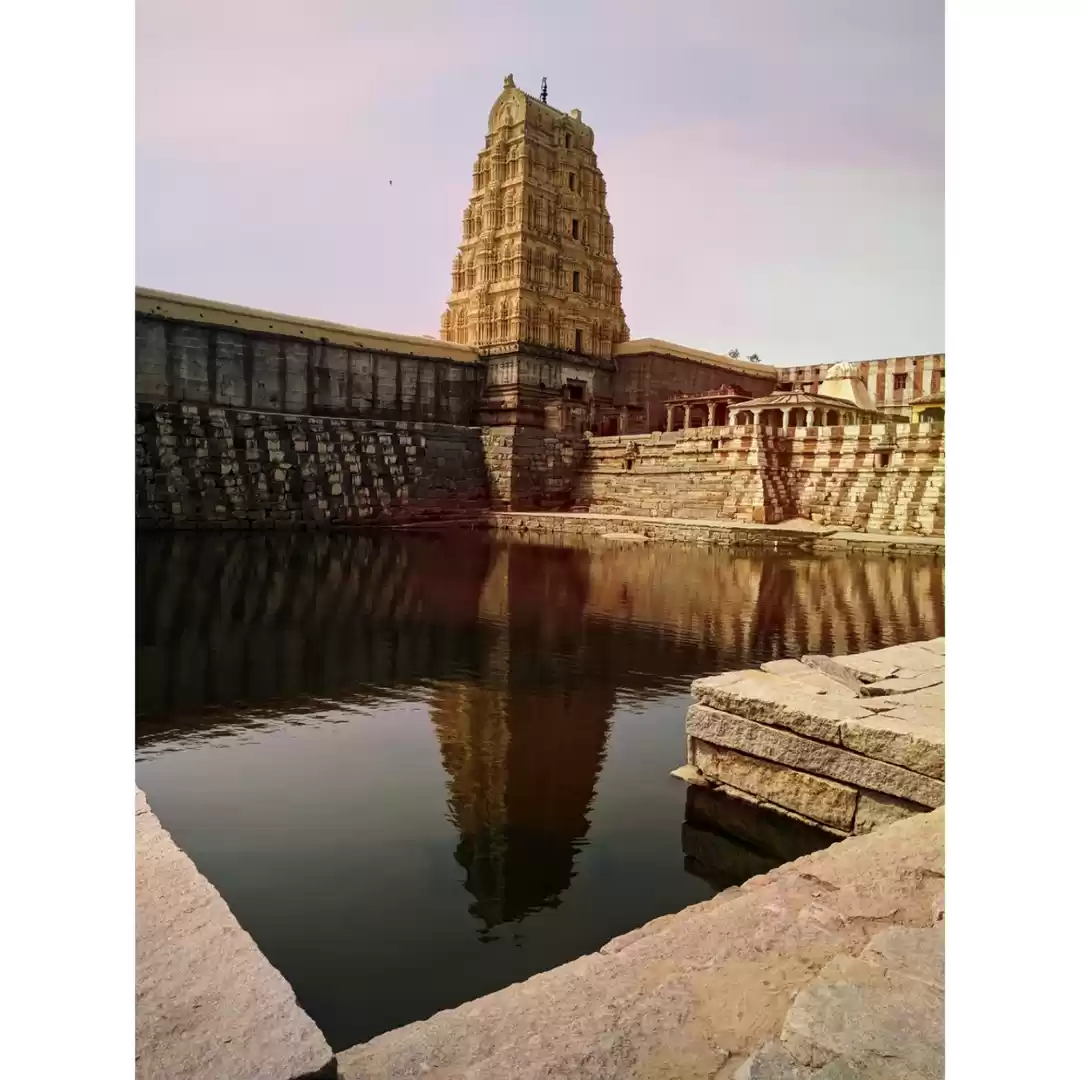Are you looking for a place to visit in Karnataka that will take you back in time and immerse you in the rich culture and heritage of India? If yes, then you should definitely add the Virupaksha Temple to your bucket list.
This temple is one of the most iconic and revered temples in Hampi, a UNESCO World Heritage Site that showcases the glory of the Vijayanagara Empire.
In this article, we will tell you everything you need to know about the Virupaksha Temple, such as its history, architecture, festivals, tips and more. Read on to find out why this temple is a must-see for every traveler who visits Hampi.
History and Origin of the Virupaksha Temple
The Virupaksha Temple is dedicated to Lord Shiva, one of the most powerful and popular deities in Hinduism. The temple was built by King Narasimhadeva I in the 7th century AD on the banks of the Tungabhadra River. The temple was originally a simple structure with a sanctum (garbhagriha) and a porch (dvara), but later it was expanded and embellished by various rulers over time.
The temple is named after Lord Shiva’s consort Parvati, who is also known as Virupaksha. The name means “the one who has a thousand eyes”. The temple has many legends and myths associated with it, such as its connection to Lord Ravana, who was defeated by Lord Vishnu at this place. According to one legend, Ravana had taken away Parvati from Shiva and hid her in a cave near this temple. Shiva searched for her all over the world and finally found her here. He then killed Ravana and rescued Parvati from his clutches.
The temple also has many historical facts and figures related to its architecture, sculptures, paintings and inscriptions. The temple has a unique style of architecture that combines elements from different regions and cultures. The temple has a gopuram (tower) that rises up to 60 meters high and has 12 stories. The tower is decorated with intricate carvings of gods, goddesses, animals and plants. The tower also has four smaller towers at its corners that are called mandapas or halls.
The main hall of the temple is called mandapa or hall. It has four pillared halls (mandapas) that are connected by corridors (prakaras). Each hall has a different theme or function. The first hall is called garbhagriha or sanctum where Lord Shiva resides. The second hall is called dvara or porch where devotees offer prayers to Lord Shiva. The third hall is called navaranga or nine-storeyed hall where Lord Vishnu resides during his incarnation as Rama. The fourth hall is called shikhara or spire where Lord Vishnu resides during his incarnation as Krishna.

The temple also has many sculptures that depict various aspects of Hindu mythology and culture. Some of the most famous sculptures are:
The Nandi statue: This statue represents Lord Shiva’s mount Nandi, who accompanies him everywhere.
The Ardhanarishvara statue: This statue represents Lord Shiva as Ardhanarishvara or half-male half-female form.
The Chaturbhuja statue: This statue represents Lord Shiva as Chaturbhuja or four-armed form.
The Durga statue: This statue represents Goddess Durga, who slays demons with her weapons.
The Lakshmi statue: This statue represents Goddess Lakshmi, who bestows wealth and prosperity.
The Ganesha statue: This statue represents Lord Ganesha, who removes obstacles and grants success.
The Hanuman statue: This statue represents Lord Hanuman, who helps Rama in his quest for Sita.
The Parvati statue: This statue represents Goddess Parvati, who is also known as Virupaksha.
The temple also has many paintings that depict various scenes from Hindu mythology and history. Some of the most famous paintings are:
The Bhagavata Purana painting: This painting depicts the story of Krishna’s birth from his mother Devaki.
The Ramayana painting: This painting depicts the story of Rama’s exile from Ayodhya.
The Mahabharata painting: This painting depicts the story of Krishna’s role in Kurukshetra War.
The Jain Tirthankara painting: This painting depicts the story of Mahavira’s enlightenment under a banyan tree.
The Narasimhadeva I inscription: This inscription records the date of construction of the temple, the names of the donors and the architects, and the praises of Lord Shiva and his consort Parvati.
The Narasimhadeva II inscription: This inscription records the date of renovation of the temple, the names of the donors and the architects, and the praises of Lord Vishnu and his incarnations Rama and Krishna.
The Krishnadevaraya inscription: This inscription records the date of restoration of the temple, the names of the donors and the architects, and the praises of Lord Vishnu and his incarnations Rama and Krishna.
The Vijayanagara Empire inscription: This inscription records the date of expansion of the temple, the names of the rulers and their achievements, and the praises of Lord Vishnu and his incarnations Rama and Krishna.
Architecture of the Virupaksha Temple
The architecture of the Virupaksha Temple is a masterpiece of art and engineering. The temple has a unique style that combines elements from different regions and cultures. The temple has a gopuram (tower) that rises up to 60 meters high and has 12 stories. The tower is decorated with intricate carvings of gods, goddesses, animals and plants. The tower also has four smaller towers at its corners that are called mandapas or halls.

The main hall of the temple is called mandapa or hall. It has four pillared halls (mandapas) that are connected by corridors (prakaras). Each hall has a different theme or function. The first hall is called garbhagriha or sanctum where Lord Shiva resides. The second hall is called dvara or porch where devotees offer prayers to Lord Shiva.
The third hall is called navaranga or nine-storeyed hall where Lord Vishnu resides during his incarnation as Rama. The fourth hall is called shikhara or spire where Lord Vishnu resides during his incarnation as Krishna.
Tips for Visiting Virupaksha Temple
If you are planning to visit the Virupaksha Temple, here are some tips that will help you make the most of your trip:

How to reach there from different locations:
The temple is located in Hampi, a UNESCO World Heritage Site that showcases the glory of the Vijayanagara Empire. You can reach the temple from different locations by road, rail or air.
The nearest airport is Vidyanagar airport (Code: VDY) which is 40 kms from Hampi and has daily flights from Bengaluru and Hyderabad.
Once in Hampi, Vijaya Vittala temple can be reached by hiring a taxi, renting a bike or bicycle. Electric carts are available at select attractions. Hosapete is the nearest railway station (15 kms from Hampi). Several buses are available from Bengaluru to reach Hampi.
You may also like to check out: If Hampi is on your mind, then you must check out this itinerary
Places to stay near the temple or nearby attractions:
There are many hotels, resorts and homestays near the temple or nearby attractions that offer comfortable and affordable accommodation options. Some of the popular ones are:
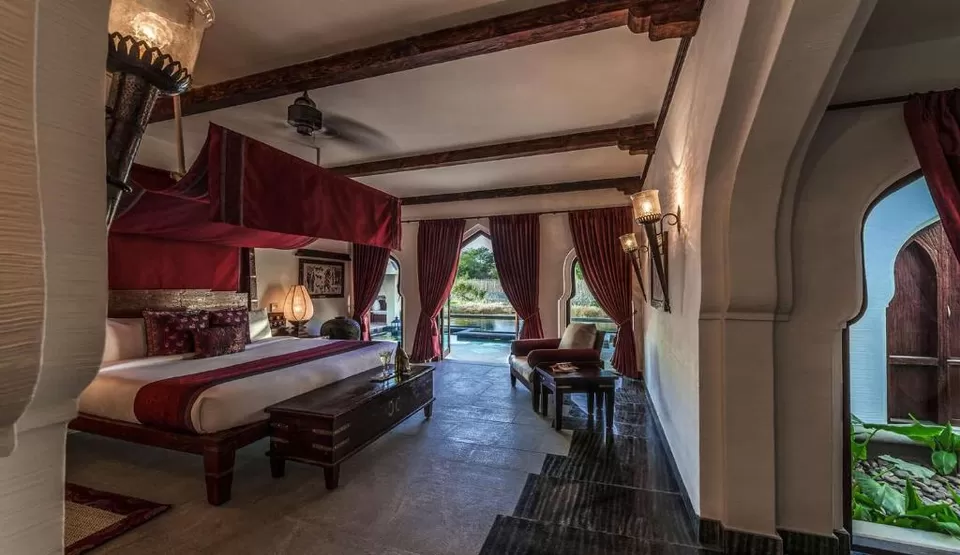
Evolve Back Hampi:
This is a luxury resort that offers spacious rooms, private pools, spa, restaurant and bar. It is located about 1 km from the temple and offers stunning views of the sunset.
To book a stay at this property click here.
Hyatt Place:
This is a modern hotel that offers cozy rooms, fitness center, restaurant and bar. It is located about 2 km from the temple and offers easy access to other attractions.
To book a stay at this property click here.
KSTDC Hotel Mayura Bhuvaneshwari
KSTDC Hotel Mayura Bhuvaneshwari Kamalapur features a garden, shared lounge, a restaurant and bar in Hampi. This 3-star hotel offers room service and a 24-hour front desk. There is free private parking and the property offers paid airport shuttle service.
To book a stay at this property click here.
Know More About Temples to visit in Karnataka
If you want to explore more temples in Karnataka, you can also visit some of these nearby attractions such as:

Hemakuta Hill Temple Complex: This is a complex of temples dedicated to Lord Shiva and his consort Parvati. It is located on top of a hill that offers panoramic views of Hampi. It also has a museum that displays ancient sculptures and paintings.
Lotus Mahal: This is a palace built by King Krishnadevaraya for his queen Rani Krishnaveni. It is located on a lake surrounded by gardens and fountains. It also has a museum that displays royal artifacts and furniture.
Elephant Stables: This is an ancient structure where elephants were kept for royal use. It is located near the main entrance of Hampi and offers a glimpse into the past.
Best Time to Visit
the best time to visit Hampi is the winter season from October to March. The weather remains moderately cool except for peak afternoons but mostly perfect for exploring the World Heritage Site. Some of the most important festivals including Vijaya Utsav (Festival of Hampi) is celebrated in the month of November.
The summer season from April to July is very hot and dry, while the monsoon season from July to September brings average rainfall and humidity. However, some people may enjoy the monsoon season for its scenic beauty and pleasant weather. The region seldom receives heavy downpours, but it is advisable to stay away from the slippery terrains to avoid accidents.
Know More About Hampi Utsava and Things to do in Hampi
If you want to experience more of Hampi’s culture and heritage, you can also join some of these events and activities such as:
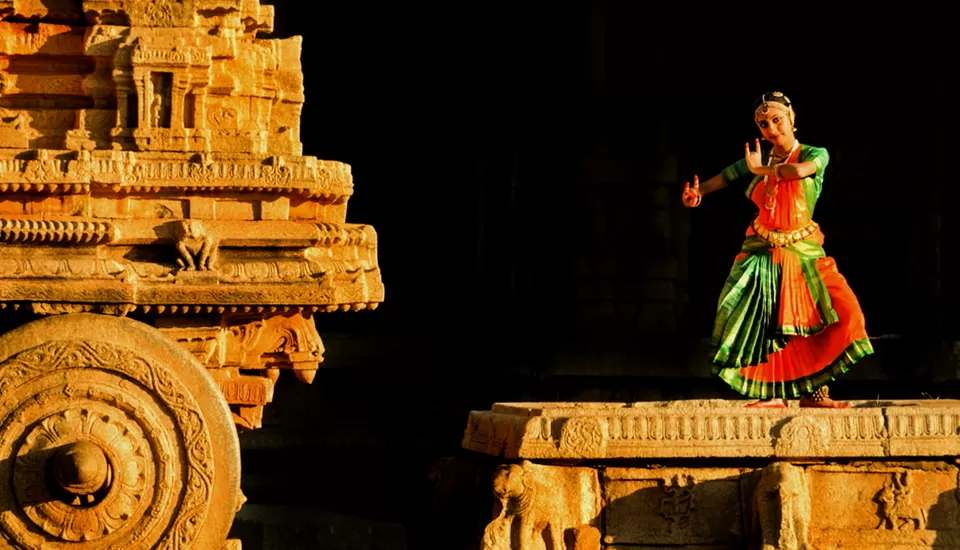
Hampi Utsava: This is an annual festival that celebrates the history and culture of Hampi. It usually takes place in January or February every year. It features cultural programs, exhibitions, competitions, workshops and more.
Hampi Heritage Guided Tour: You can take a guided tour that takes you through some of the highlights of Hampi’s monuments, temples, palaces and gardens. It also includes some fun activities such as coracle ride, pottery making, painting etc.
Also check out: The Ultimate Guide To Hampi
The Virupaksha Temple is a sacred and historic site in Hampi that offers a glimpse into the rich culture and heritage of India. The temple is dedicated to Lord Shiva and his consort Parvati, and has many legends and myths associated with it. The temple also has a unique style of architecture that combines elements from different regions and cultures.
If you visit Hampi, you should definitely add the Virupaksha Temple to your bucket list. This temple is a must-see for every traveler who visits Hampi.






